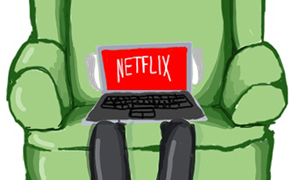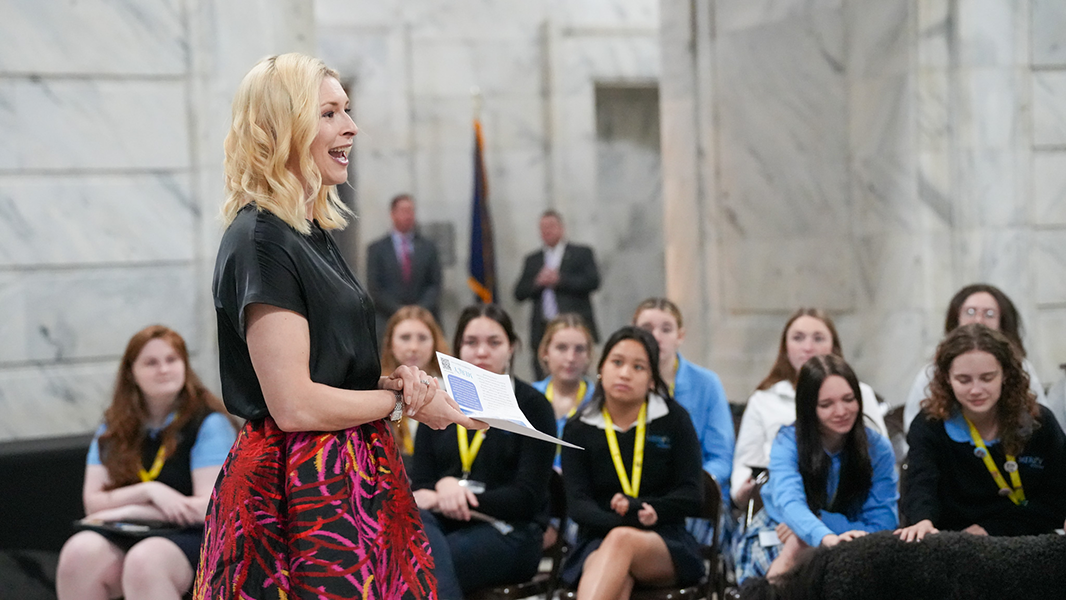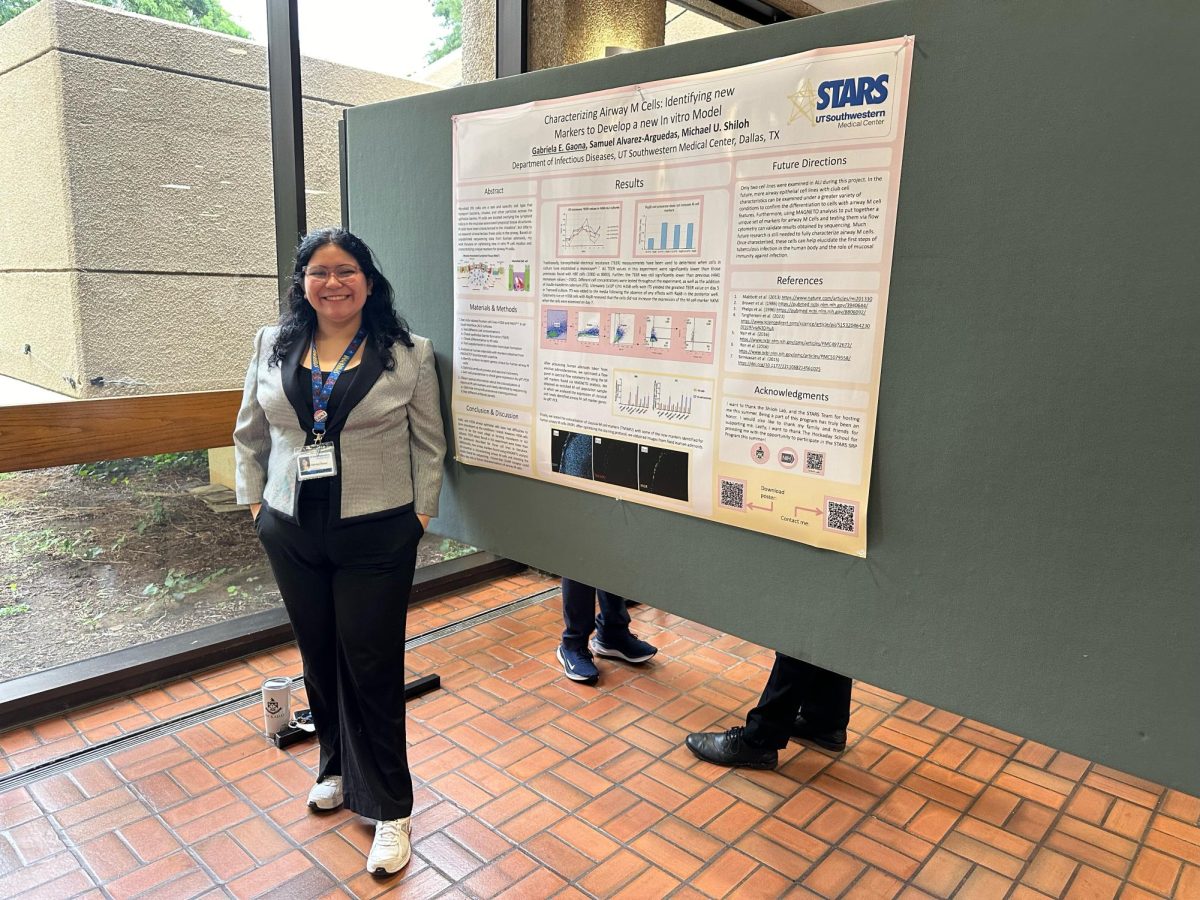A recent study reveals new findings about watching Netflix

It’s Saturday night and sophomore Emma Deshpande has been in her bedroom for the past three hours watching Netflix from her laptop. It’s dark and the only thing that can be heard, besides the video she is watching, is the sound of her munching on oreos and ice cream.
She is not alone. Seventy four percent of the Upper School spends two or more hours at one time slumped in their bed or couch watching Netflix on their laptops, according to a survey of 210 students.
Chad Bingo, a senior at Siena College in Albany, N.Y., who is majoring in actuarial science and marketing and has been studying the phenomenon of binge-watching, specifically through Netflix, wouldn’t be surprised by this number.
“It isn’t that uncommon for people to watch an entire series in a weekend, and that’s what we were trying to explore,” Bingo said.
Bingo, whose work was featured recently on the National Public Radio last February, said it is extremely difficult to define “binge-watching” since episodes are of different lengths. He has been researching the actions of Netflix and television viewers along with his marketing professor Raj Raj Devasagayamsince his sophomore year.
When Bingo researched the term “binge-watching” before he started this study, he did not find anything published in scientific journals. The term was mainly used in popular media.
Deshpande is an avid Netflix viewer but does not see herself as a binge-watcher.
“I consider myself a Netflix enthusiast,” she said.
Unlike other scientific fields, extensive research is still yet to be done on this topic.
“We haven’t really seen anything, which is one of the reasons why we are pushing this,” Bingo said. “It’s becoming very popular for the public and everybody else, including myself, to watch this way, but no one has really dove into why people are doing this.”
At first, Bingo’s research focused on why people view so much TV and why they watch episodes back-to-back. Between his sophomore and junior year of college, he started conducting focus groups and surveys.
He asked his focus groups questions such as, “have you ever felt addicted to a show? Who is your favorite character?” And he discovered a common theme in the answers.
“We were finding that there is this whole relationship that we are forming with the characters. That, we believe, is what is causing it,” Bingo said. “It was as if [the viewer and character] were dating.”
The feeling he discovered that people were experiencing after finishing a series was similar to that of finishing a book.
“Have you ever read a great book? You know you finish the final page in the book, and you close it, and that’s it? You are never going to get that feeling of reading it for the first time again, and if it’s the end of a series, you will never get anything else other than that,” Bingo said. “They were feeling this [empty feeling] because they wouldn’t be able to see their favorite characters anymore.”
In some instances, Hockaday students are a testament to Bingo’s findings. Sophomore Asiyah Saeed feels this emptiness after finishing a series that has aired for multiple seasons, such as “Psych” and “Monk.”
“Short series, you don’t get as attached, but shows that have been going on for years and have a lot of episodes, and they are really good shows, you feel sad when they are over,” Saeed said.
This, however, isn’t always the case. Deshpande does not relate to the characters from satirical shows such as “Arrested Development,” but she, like Saeed, feels connected to characters from certain shows.
“On a really dramatic show like “One Tree Hill” and “The West Wing,” you kind of grow to be attached to these other characters,” Deshpande said.
Some characters are so impactful that students think about them outside the realm of Netflix. Sophomore Ellea Lamb sometimes see things that remind her of her favorite TV show characters.
“The other day, I saw a dress and was like ‘hey, that looks like something Blair Waldorf would wear,’” Lamb said.
Bingo’s survey targeted four focus groups of a variety of ages: the first was high school seniors over 17, the second group included people between the ages of 40 and 80 and the other two focus groups were parents and young professionals ages 25 to 35.
The minimum age requirement for a research subject at Siena College is 17 years old. Thus, younger groups could not be surveyed. Although the ages of people surveyed were variant, the results were consistent throughout all four groups.
One of the first things Bingo’s survey found was that people thought about characters from their television series during the day and paid special attention to certain characters whenever the show was on.
“People were admitting to feeling addicted to shows in each bracket,” Bingo said.
However, Bingo could not entirely explain why this occurred.
Furthermore, he has recently released another survey that is expected to be completed by May and will try to define “binge-watching.” Bingo is currently waiting for 400 plus responses.
“We have an idea [of the results]. We think something is there,” he said. “We believe that this is it, but we need hard data to back it up, which is what we are trying to do right now.”
– Sonya Xu







